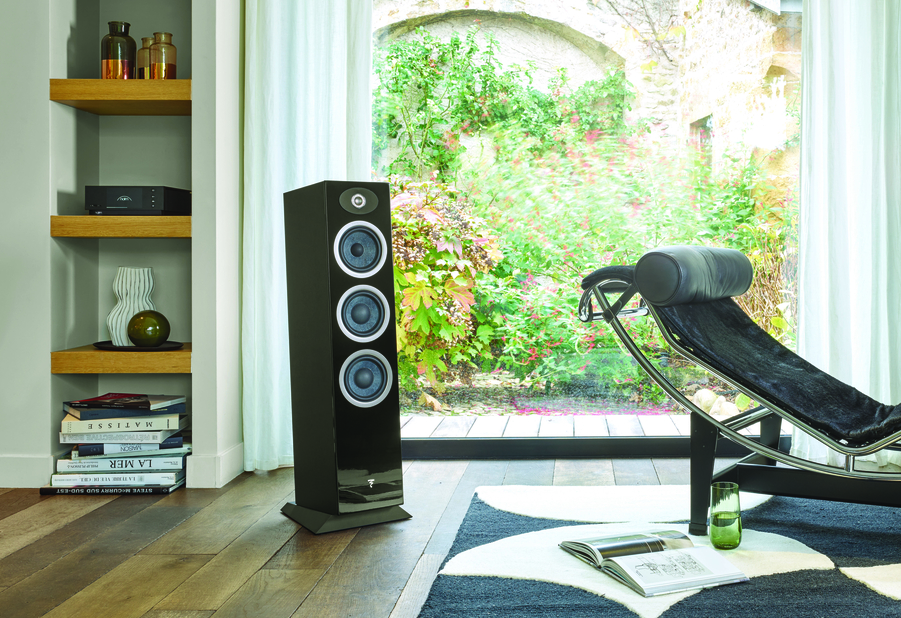Floorstanding vs. Bookshelf Speakers: The Real Differences Beyond Size
Why Size Isn't Everything in High-End Audio

When customers/walk through our showroom, we often see them gravitate toward the imposing floor-standing speakers, assuming bigger automatically means better. Then something interesting happens—they sit down for a demo with a pair of well-positioned bookshelf speakers, and their assumptions crumble. The truth about floor-standing speakers versus bookshelf models runs much deeper than physical dimensions, involving room acoustics, amplifier synergy, and your actual listening habits. After nearly five decades of helping New Englanders in and around Boston build exceptional audio systems, we've learned that the "right" speaker choice depends on factors many people never consider. Let's dig into what really matters when choosing between these two speaker types.
SEE ALSO: Here Are Our Top Floor-Standing Speaker Recommendations
The Importance of Driver Configurations
There’s a physics reality with speaker size. Floorstanding speakers typically house multiple woofers in a larger cabinet, giving them natural advantages in bass response and overall dynamic range. Think of brands like Focal or B&W—their floor-standers can move serious air without breaking a sweat.
Bookshelf speakers work differently. They're usually two or three-way designs with a single woofer and tweeter or an added midrange, relying on precision rather than brute force. The smaller cabinet means less internal volume for bass reinforcement, but it also means fewer potential resonance issues. For example, some bookshelf speakers from Dali image so precisely that they disappear completely, leaving just the music floating in space.
The cabinet volume difference affects more than just bass extension—it changes how the entire frequency spectrum develops. Larger cabinets in floor standers allow for better low-frequency development, while smaller bookshelf enclosures often excel in midrange clarity and coherence.
Your Room Is Part of the System
Boston-area homes sometimes present unique challenges. Those beautiful old New England rooms with hardwood floors and tall ceilings love floor-standing speakers that can energize the space properly. But place those same speakers in a typical Back Bay apartment, and you might overwhelm the room.
Bookshelf speakers on quality stands often work better in smaller spaces because you can control their height and distance from boundaries. In a cozy Cambridge listening room, bookshelf speakers often outperform much larger floor standers simply because they fit the space better.
Floor proximity matters, too. Floorstanders benefit from boundary reinforcement, using your floor as part of their acoustic design. Bookshelf speakers, elevated on stands, avoid some of these boundary interactions entirely.
The Power Partnership
Here's something that surprises people: bookshelf speakers often demand more from your amplifier, not less. Yes, they need fewer watts, but they're typically less efficient than floor-standing designs. A quality amplifier like those from McIntosh or NAD's Master Series will reveal every nuance in a great bookshelf speaker, while a mediocre amp will mercilessly expose its limitations.
Floorstanding speakers sometimes offer higher sensitivity and easier amplifier loads, although this varies greatly with speaker design and crossover networks. They can be more forgiving if your amplifier isn't quite up to snuff, though they'll always reward you with better performance when paired with quality electronics. The multiple drivers in floor standers distribute the workload, and the larger cabinet lets them get louder without requiring as much power. Of course, this will vary from speaker to speaker based on driver configurations, materials, and basic speaker design.
Making the Right Choice for Your Space
The decision comes down to your specific situation. Choose floor-standing speakers when you have a dedicated listening room, love full-range music reproduction, and want to avoid adding a subwoofer. They excel in larger spaces and deliver that full-scale sound that makes jazz trios sound life-sized.
Bookshelf speakers shine in near-field setups, smaller rooms, and when ultimate imaging precision matters more than deep bass extension. They're perfect for more intimate spaces or when room aesthetics require a more subtle approach.
Both approaches can deliver extraordinary music reproduction. The key is matching the design to your room, your amplification, and how you actually listen to music.
Ready to experience the difference firsthand? Visit our showroom to compare these approaches with your own ears. At Natural Sound, we've been helping clients throughout Boston, MA, and the surrounding areas find their perfect audio match since 1975. Contact us today to schedule your listening session.

